

Project Solutions
ABC OF RECHARGEABLE BATTERIES (2)
Published:2011/8/9 1:37:00 Author:Phyllis From:SeekIC
By Gert Helles
Charging batteries
A new rechargeable battery or battery pack (several batteries in one package) is not guaranteed to be fully charged; in fact, it is likely to be nearly discharged. The first thing to do, therefore, is to charge the battery/pack in accordance with the manufacturer’s chemistry-dependent guidelines.
Every charging operation applies voltage and current in a sequence that depends on the battery chemistry. Thus, a look at battery-cell chemistries reveals different requirements to be met by the charger and the charging algorithm. The terms most commonly found in battery charging are constant current (CC), used for NiCd and NiMH cells, and constant current/constant voltage (CC/CV), applied to lithiumion and lithium-polymer cells (Figures 1-6). Table 3 summarizes today’s most frequently used charging techniques and the associated parameters per cell type. The methods to determine the very important ’end of charge’ moment are listed separately in Table 4. 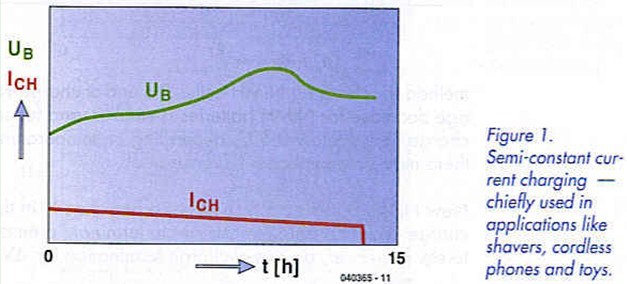
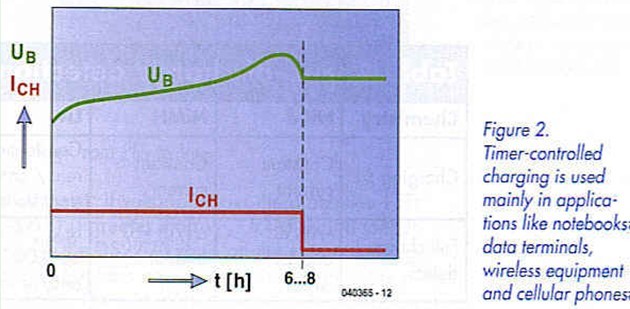
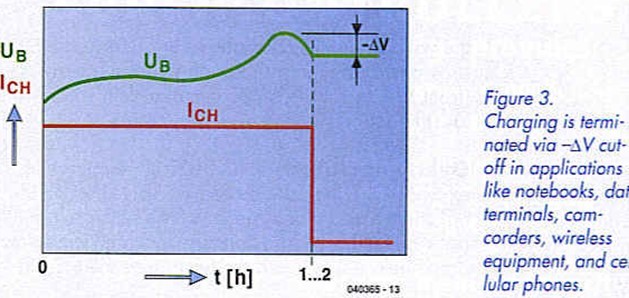
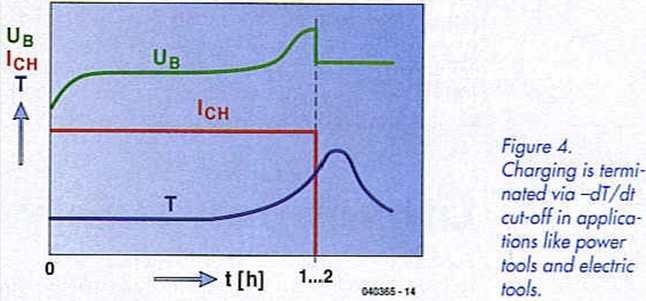
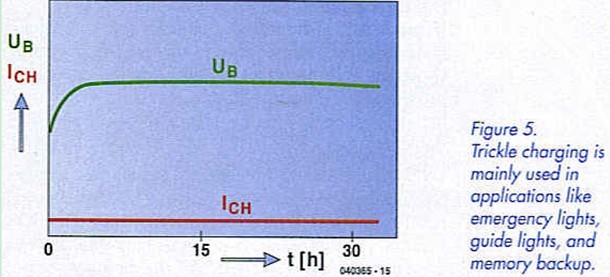

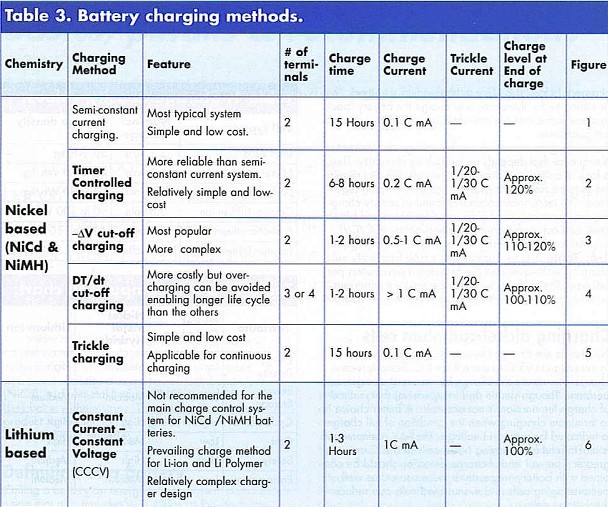
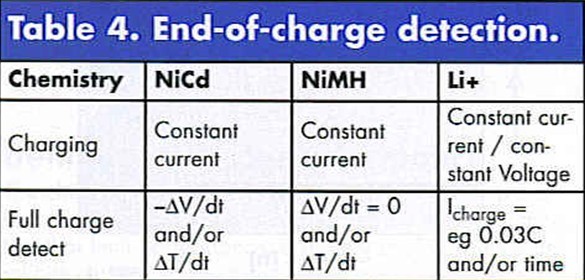
Charging nickel-cadmium cells
NiCd cells are charged by applying a constant current in the range 0.05 C to more than 1 C. Some low-cost chargers terminate the charge by means of absolute temperature. Though simple and inexpensive, that method of charge termination is not accurate. A better choice is to terminate charging when the condition of full charge is indicated by a drop in voltage. The -AV phenomenon is most useful for charging NiCd cells at 0.5 C or greater. The -AV end-of-charge detection should be combined with battery-temperature measurement as well, because aging cells and mismatched cells can reduce the voltage delta.
You can achieve a more precise full-charge detection by sensing the rate of temperature increase (dT/dt), and that method of charge detection is kinder to the battery than is a fixed-temperature cut-off. Charge termination based on a combination of AT/dt and -AV cut-off enables a longer life cycle by avoiding overcharge.
Fast charging improves charge efficiency. At 1 C, the efficiency is close to 1.1 (91%), and the charge time for an empty pack will be slightly more than one hour. When applying a 0.1 C charge, the efficiency drops to 1.4 (71%) with a charge time of about 14 hours.
Because the charge acceptance of a NiCd battery is close to 100%, almost all energy is absorbed during the initial 70% of charging, and the battery remains cool. Ultra-fast chargers use this phenomenon to charge a battery to the 70 percent level within minutes, applying currents equal to several times the C-rating without heat build-up. Above 70% the charging continues at a lower rate until the battery is fully charged. Eventually, you top off the battery by applying a trickle charge in the range 0.02 C to 0.1 C.
Reprinted Url Of This Article: http://www.seekic.com/blog/project_solutions/2011/08/09/ABC_OF_RECHARGEABLE_BATTERIES__(2).html
Print this Page | Comments | Reading(276)
Article Categories
New published articles
· Imagination works with TSMC to develop FinFET process
Author:Ecco Reading(30190)
· XMOS pushes event-driven MCUs with lower price
Author:Ecco Reading(3461)
· Intel brings upgraded 32-nm SoC for smartphones
Author:Ecco Reading(3181)
· Micron pushes TLC 128-Gbit NAND flash
Author:Ecco Reading(3662)
· Intel will stop supplying desktop motherboards
Author:Ecco Reading(5231)
· Processor market was expected to regain strength in 2013
Author:Ecco Reading(3248)
· It was reported that TSMC sales fall steeply
Author:Ecco Reading(3390)
· Cisco, NXP work with auto wireless startup
Author:Ecco Reading(3530)
· Micron was impacted by manufacturing glitch
Author:Ecco Reading(3935)
· China can make 22-nm transistor by themselves
Author:Ecco Reading(3707)
· Chip market rebound is coming, according to survey
Author:Ecco Reading(3677)
· Sony, Toshiba will spend more on chips, iSuppli reports
Author:Ecco Reading(3714)
· Qualcomm becomes the 13th company to join NFC Forum board
Author:Ecco Reading(6028)
· TSMC increases building work for FinFET fab
Author:Ecco Reading(3692)
· TI plans to cut 1,700 jobs in OMAP shift
Author:Ecco Reading(4478)